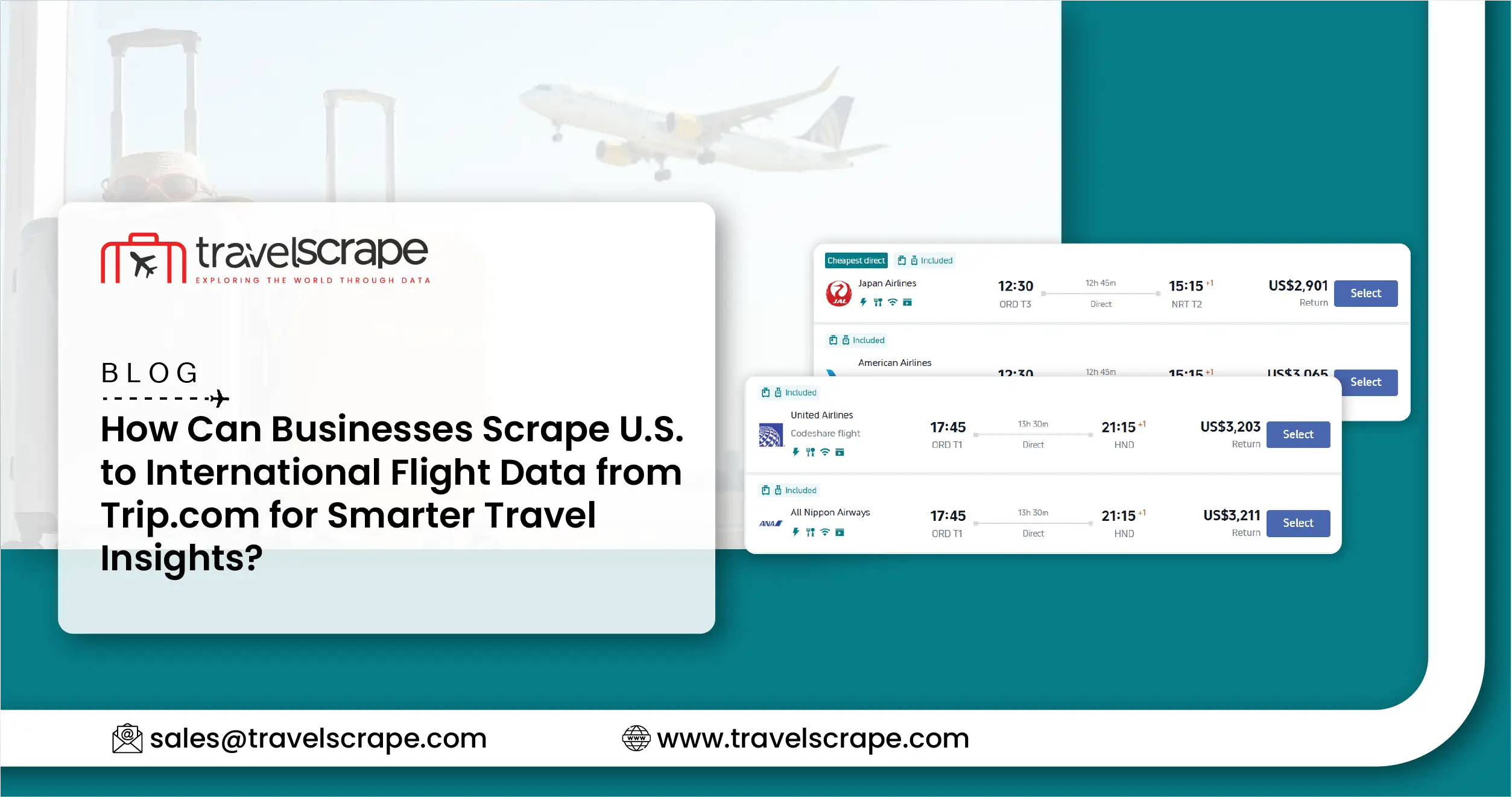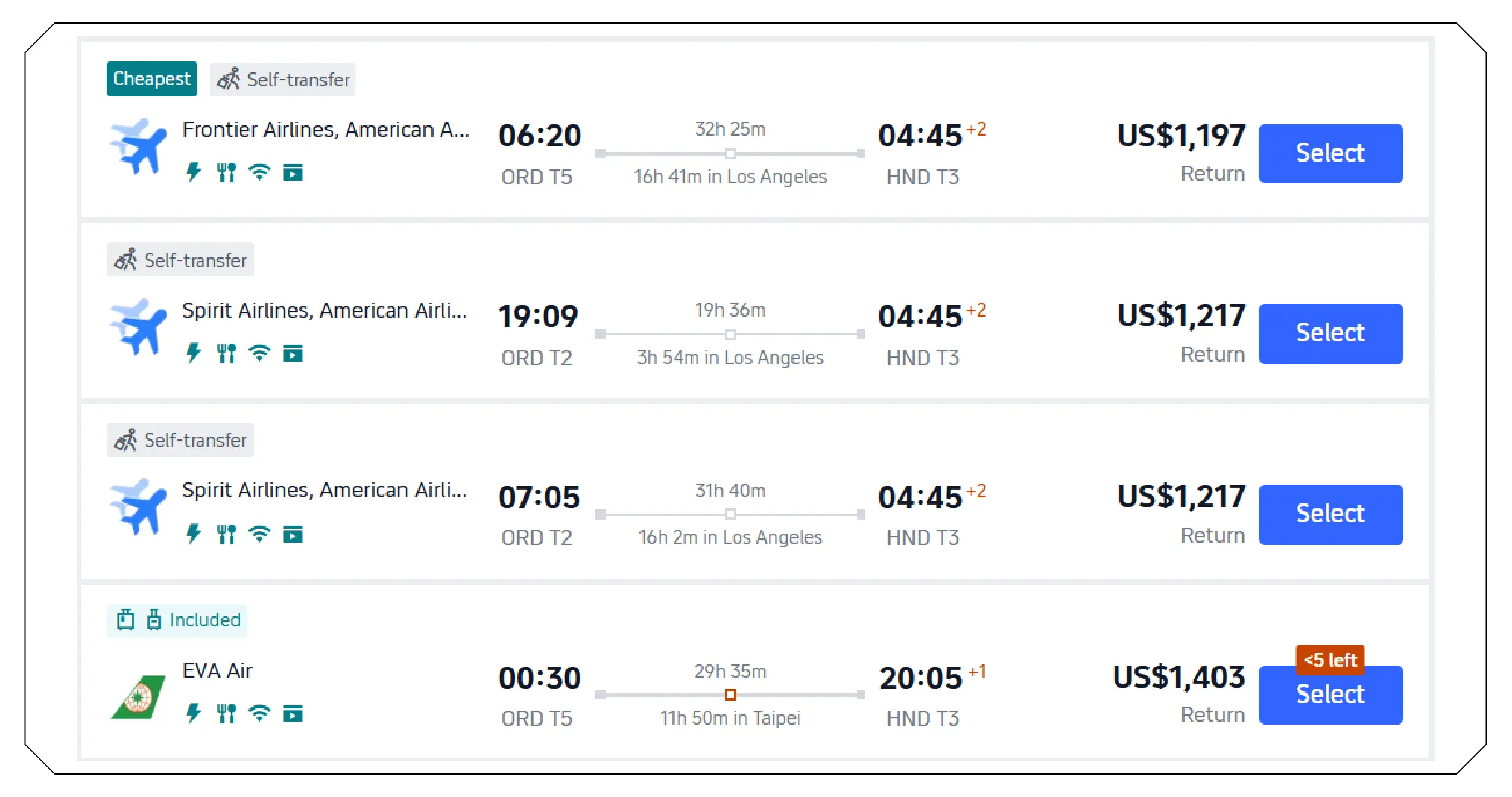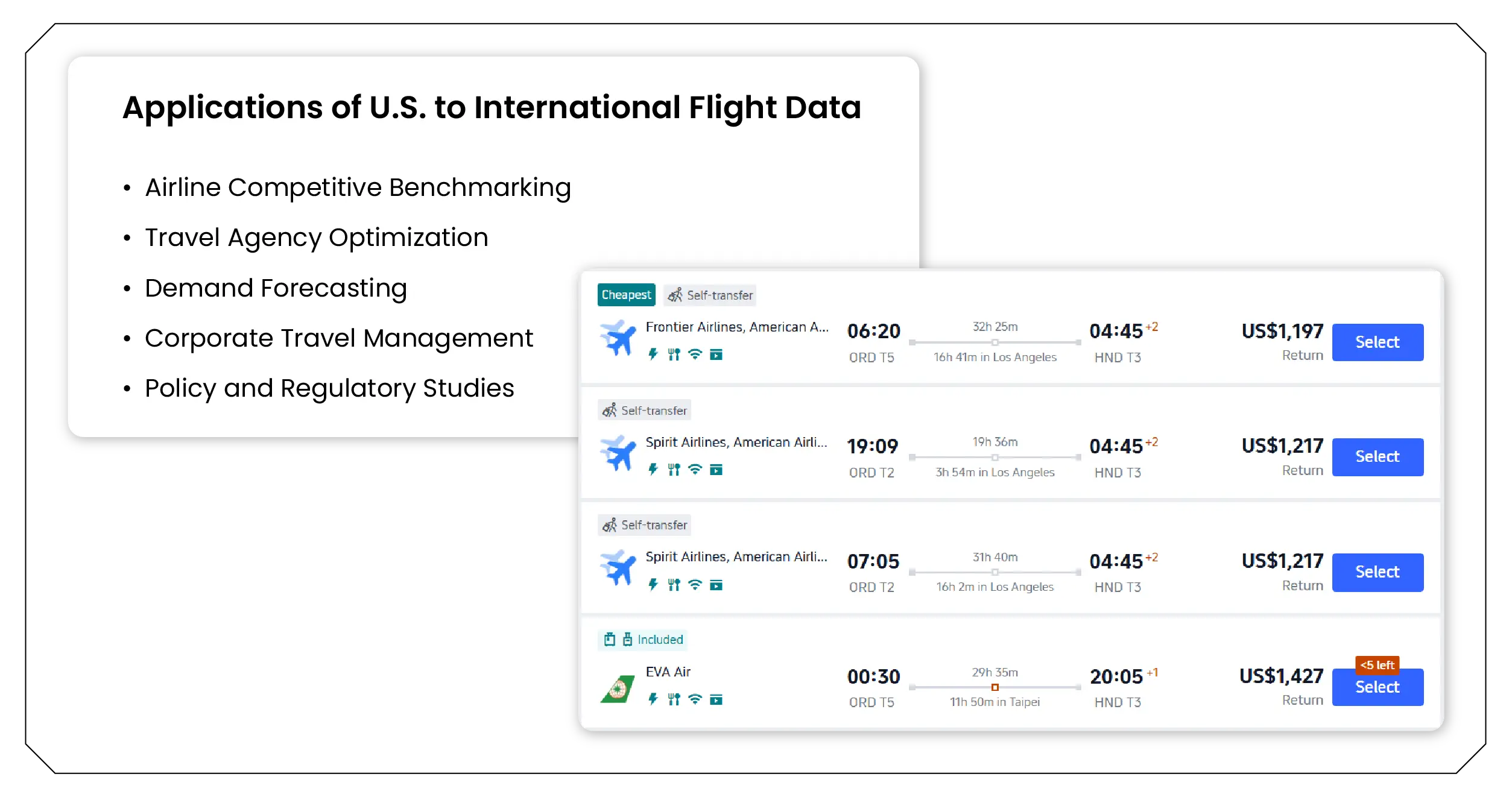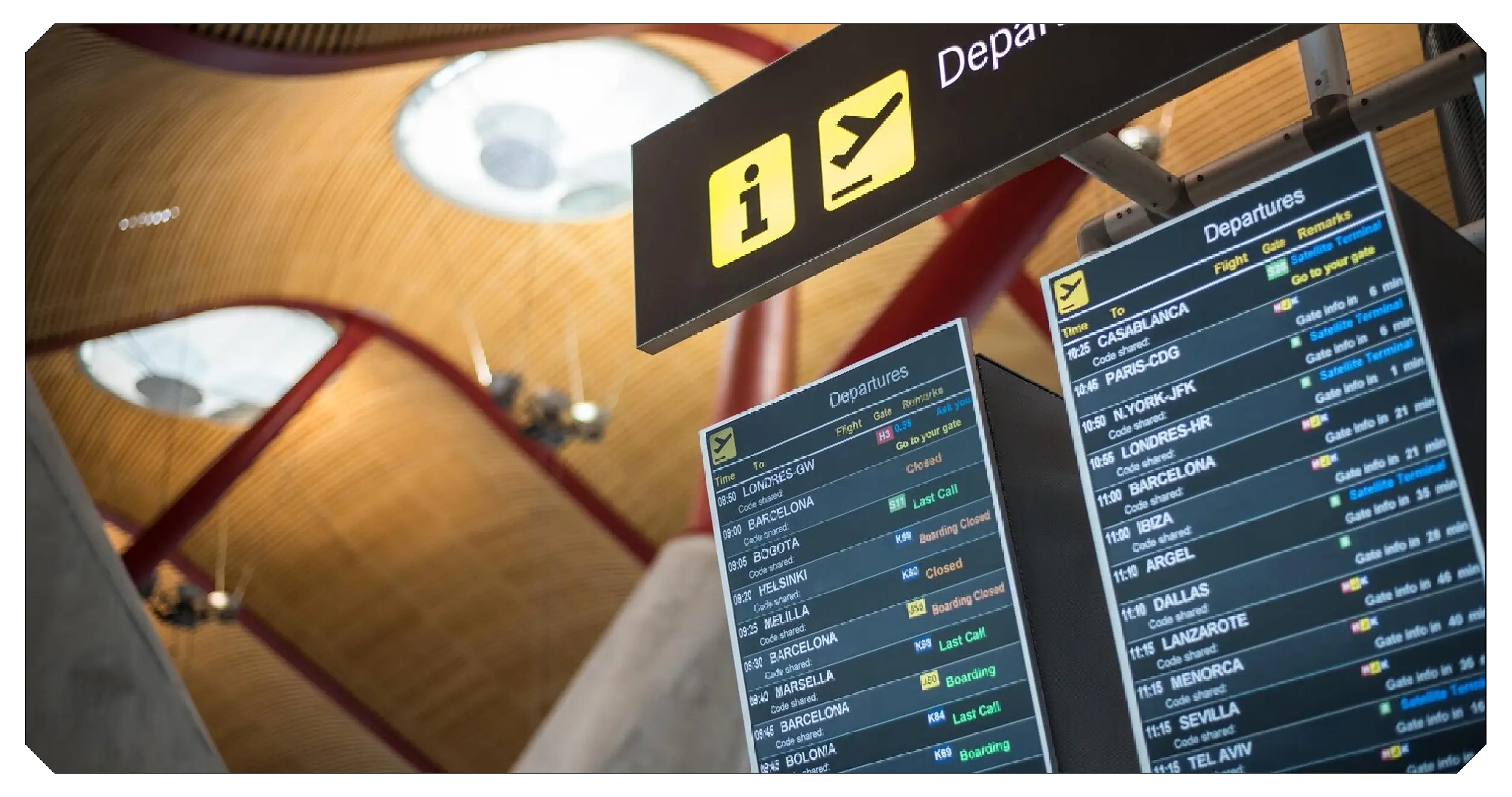How Can Businesses Scrape U.S. to International Flight Data from Trip.com for Smarter Travel Insights?

Introduction
Airfare remains one of the most dynamic and volatile sectors within global travel. Prices fluctuate daily, influenced by demand, fuel costs, seasonality, exchange rates, and competitive strategies of airlines. For businesses, researchers, and travelers, having access to structured, real-time flight data is invaluable. One effective method to achieve this is to scrape U.S. to international flight data from Trip.com, which provides vast coverage of global airlines, routes, and ticketing options. Alongside, businesses can also implement tools to Scrape Trip.com Flight Data to gain deeper insights into route-specific trends, booking habits, and pricing behavior. With advanced methods like Trip.com flight price scraping, organizations can build pricing dashboards, run comparative market analysis, and strengthen their customer engagement strategies. For travel businesses and data analysts, such methods deliver Flight Price Data Intelligence that enables better forecasting and more informed decision-making. This blog explores in detail how scraping data from Trip.com can transform the way U.S. to international flights are studied, priced, and monitored.
Why Scraping Trip.com for U.S. to International Flights Matters?

Trip.com has evolved into a leading aggregator, connecting millions of travelers with flights from U.S. airports to destinations across Europe, Asia, the Middle East, and beyond. Its database includes full-service airlines, budget carriers, seasonal routes, and flexible date offerings.
When businesses scrape aggregated flight fares , they gain an edge by understanding how flight prices differ across carriers, days of the week, booking windows, and destination regions. This allows airlines, OTAs (online travel agencies), and travel consultants to optimize ticket pricing and offer competitive packages.
Moreover, airports and ride-hailing services can link this dataset with smarter airport ride pricing , enabling them to synchronize ground transportation rates with peak international departure windows. For example, a surge in bookings from JFK to London could trigger dynamic pricing models for local airport transfers.
Key Objectives of Scraping Trip.com Flight Data
- Price Benchmarking Across Airlines –
Monitor flight data in real time to evaluate competitiveness of airlines serving U.S.-to-international routes. - Traveler Behavior Analysis –
Gain insights into booking windows, cabin preferences, and seasonal demand surges. - Forecasting with AI Models –
Anticipate fare increases or drops weeks in advance with predictive models. - Operational Strategy –
Adjust inventory, optimize promotions, and expand partnerships with international carriers. - Revenue Optimization –
Use scraped airfare data to capture the right demand segments while maintaining margins.
Methodology: How to Scrape U.S. to International Flight Data from Trip.com
The scraping process involves several structured steps:
- Identifying Target Routes –
e.g., JFK, LAX, ORD, ATL to London, Paris, Dubai, Tokyo, and Sydney. - Setting Search Filters –
departure/return date, passengers, class, flexible options. - Extracting Parameters –
airline, airports, dates, prices, cabin class, layovers, fare restrictions. - Building API-based Scrapers –
Trip.com APIs or custom scrapers for flexibility. - Data Cleaning & Structuring –
ensuring accuracy for analysis.
Applications of U.S. to International Flight Data
Applications of U.S. to International Flight Data span across competitive pricing analysis, demand forecasting, route optimization, and personalized travel services. Businesses, airlines, and travel agencies use these insights to refine strategies, boost profitability, and enhance passenger experiences globally.

- Airline Competitive Benchmarking – Dynamic pricing alignment with competitor fares.
- Travel Agency Optimization – Tailored recommendations and deal highlights.
- Demand Forecasting – Predict surges and soft demand periods with macroeconomic trends.
- Corporate Travel Management – Optimize travel budgets and contracts.
- Policy & Regulatory Studies – Monitor fairness and market practices.
Linking Flight Data with Broader Travel Ecosystems
- Airfare + Accommodation Bundling – Align discounted flights with hotel promos.
- Airfare + Airport Rides – Ride-hailing services target demand peaks.
- Airfare + Ancillary Purchases – Duty-free, lounges, and tours leverage outbound peaks.
Data Intelligence and Real-World Observations
- tBooking Lead Times Differ – Asia 45–60 days, Europe 20–30 days.
- Seasonality Stronger on Long-Haul Routes – Europe peaks in summer, Asia/Australia in winter holidays.
- Layover Preferences – Direct flights for Europe, cheaper layovers for Asia.
- Currency Shifts – Dollar fluctuations affect competitiveness.
- Promotional Campaigns – Alliances and sales disrupt pricing patterns.
Future Outlook

As airlines embrace AI, scraped data will fuel real-time pricing and predictive algorithms. Despite challenges with NDC and direct distribution models, scraping remains one of the most reliable strategies for market intelligence.
Ethical and Legal Considerations
Scraping must respect Trip.com’s robots.txt, rate limits, and terms of service. Requests should be anonymized, server-friendly, and compliant with regulations such as GDPR. Responsible practices ensure sustainability.
How Travel Scrape Can Help You?
- Comprehensive Flight Data Coverage – fares, routes, airlines, booking classes.
- Real-Time Price Monitoring – continuous tracking of fare fluctuations.
- Customizable Scraping Solutions – seasonal trends, multi-city fares, layovers.
- Advanced Data Intelligence – analytics for predictions and benchmarking.
- Scalable & Reliable Infrastructure – automated, large-scale extractions.
Conclusion
Scraping U.S. to international flight data from Trip.com unlocks insights into airfare trends, competitor benchmarks, and traveler behavior. When integrated with hotels, rides, and ancillary services, it empowers businesses to maximize profitability and customer experience. With AI-driven dashboards, real-time analytics, and ethical practices, Travel Scrape enables smarter, more competitive travel strategies.

